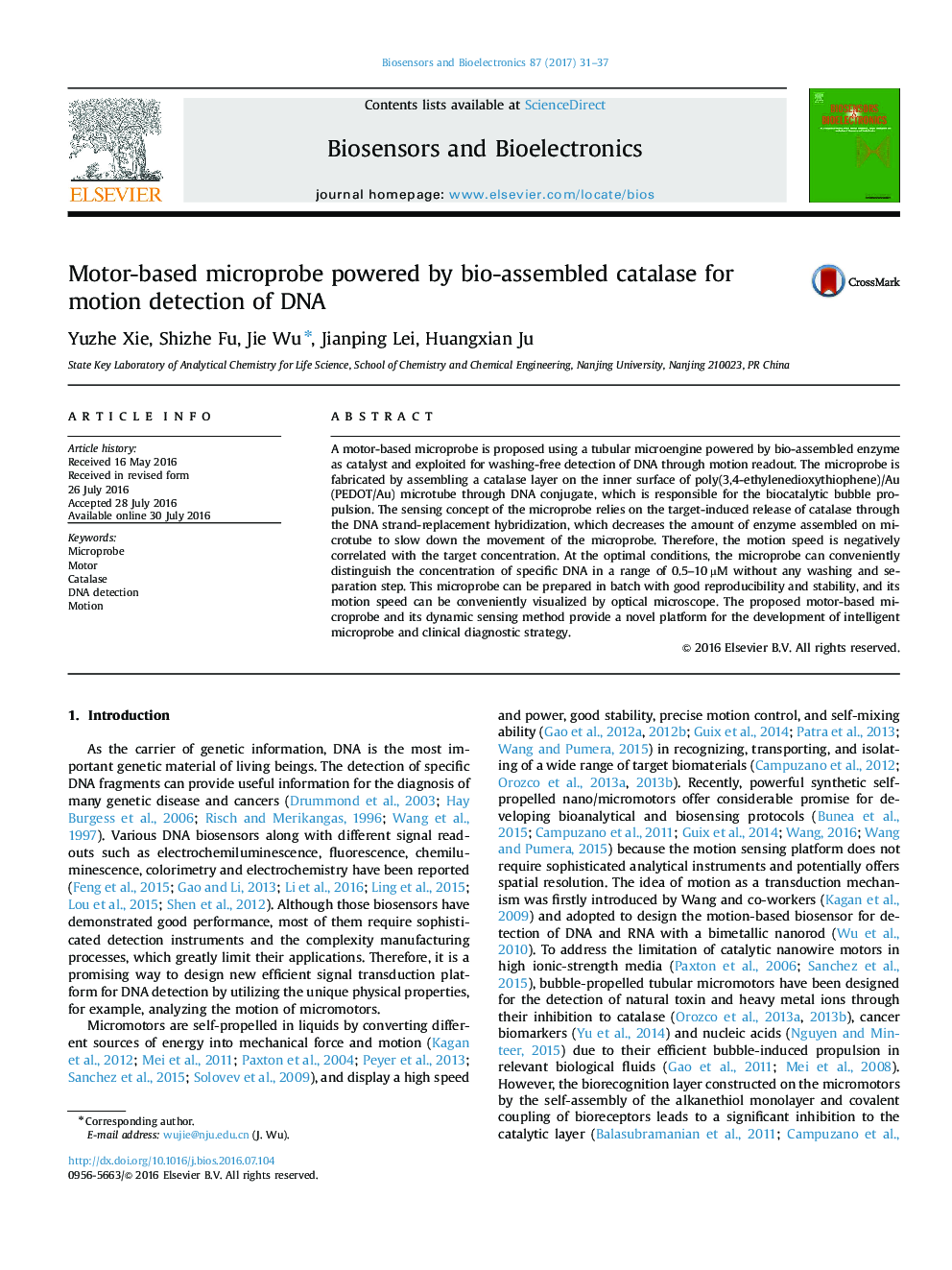| Article ID | Journal | Published Year | Pages | File Type |
|---|---|---|---|---|
| 866157 | Biosensors and Bioelectronics | 2017 | 7 Pages |
•A motor-based microprobe powered by bio-assembled catalase is designed.•The microprobe is fabricated based on PEDOT/Au microtube along with DNA assembling.•Motion signal of microprobe can be regulated by the target DNA directly.•The microprobe can detect DNA without any washing and separation step.•The motion-based design can be extended to detect other analyte.
A motor-based microprobe is proposed using a tubular microengine powered by bio-assembled enzyme as catalyst and exploited for washing-free detection of DNA through motion readout. The microprobe is fabricated by assembling a catalase layer on the inner surface of poly(3,4-ethylenedioxythiophene)/Au (PEDOT/Au) microtube through DNA conjugate, which is responsible for the biocatalytic bubble propulsion. The sensing concept of the microprobe relies on the target-induced release of catalase through the DNA strand-replacement hybridization, which decreases the amount of enzyme assembled on microtube to slow down the movement of the microprobe. Therefore, the motion speed is negatively correlated with the target concentration. At the optimal conditions, the microprobe can conveniently distinguish the concentration of specific DNA in a range of 0.5–10 µM without any washing and separation step. This microprobe can be prepared in batch with good reproducibility and stability, and its motion speed can be conveniently visualized by optical microscope. The proposed motor-based microprobe and its dynamic sensing method provide a novel platform for the development of intelligent microprobe and clinical diagnostic strategy.
